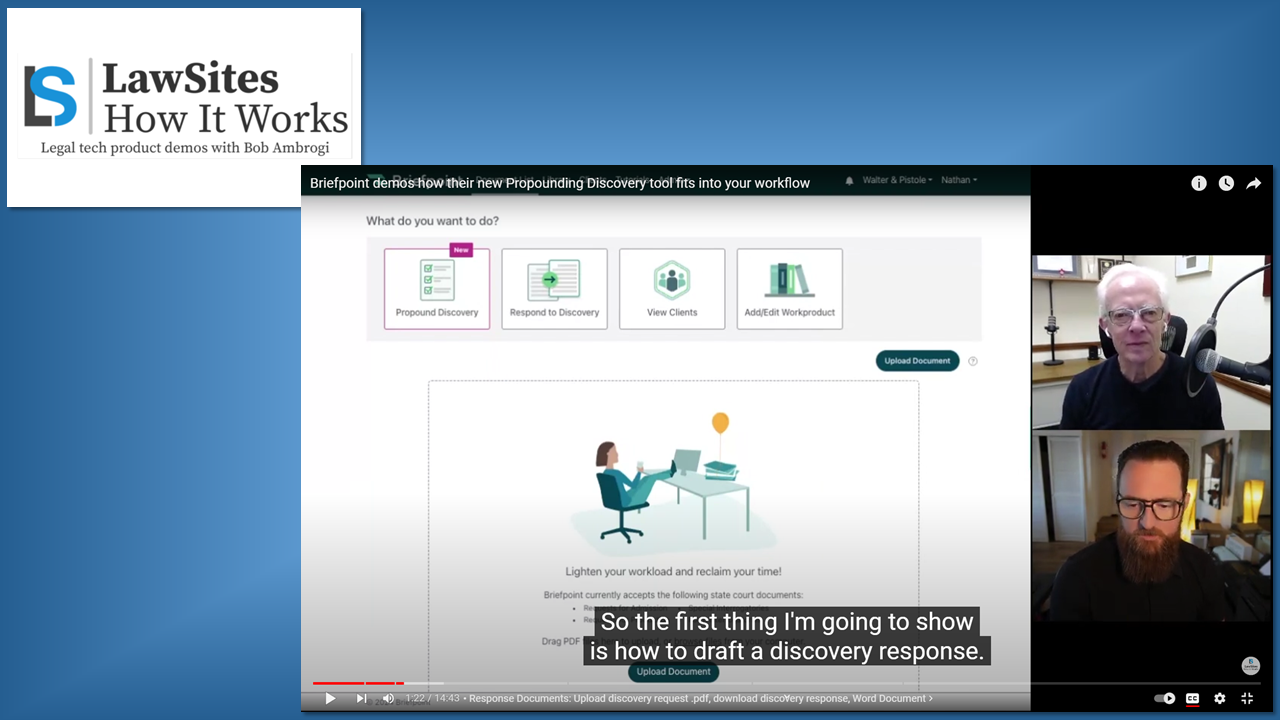In the latest episode of our video series How It Works, we bring you a demonstration of Briefpoint, a solution that uses artificial intelligence to draft discovery responses and discovery requests in litigation.
With Briefpoint, a lawyer simply uploads a PDF document and it generates the appropriate discovery requests or response. It can generate responses to requests for admission, requests for production, or interrogatories.
In addition to creating discovery responses, Briefpoint’s newest feature can create initial discovery requests based on the pleadings. The lawyer simply uploads a complaint or answer, and it automatically generates a request for production, a request for admissions, and a set of special interrogatories.
Joining me today to tell us all about Briefpoint and show us how it works is Nathan Walter, the company’s CEO and cofounder. The topics he covers are:
- About Briefpoint.
- Response Documents: Upload discovery request in PDF and download discovery response in a Word document.
- Response Collection: Briefpoint converts requests into plain English and collects responses from your clients.
- Document Formatting: Automatic document formatting pursuant to each case’s jurisdiction’s local formatting rules and customs (all 50 states + DC).
- Propounding Discovery: Upload a pleading PDF, download complete sets of interrogatories, requests for production, and fequests for admission.
Watch the video below.
About How It Works
How It Works is a sponsored video series that lets you see how legal technology products work. Each episode features a hands-on demonstration, presented by the product’s developer and moderated by me.
See other episodes here or on YouTube, or read this introduction.
To feature your product in How It Works, contact us here.
 Robert Ambrogi Blog
Robert Ambrogi Blog